The Secret Behind a Straight Back and the Return Ace
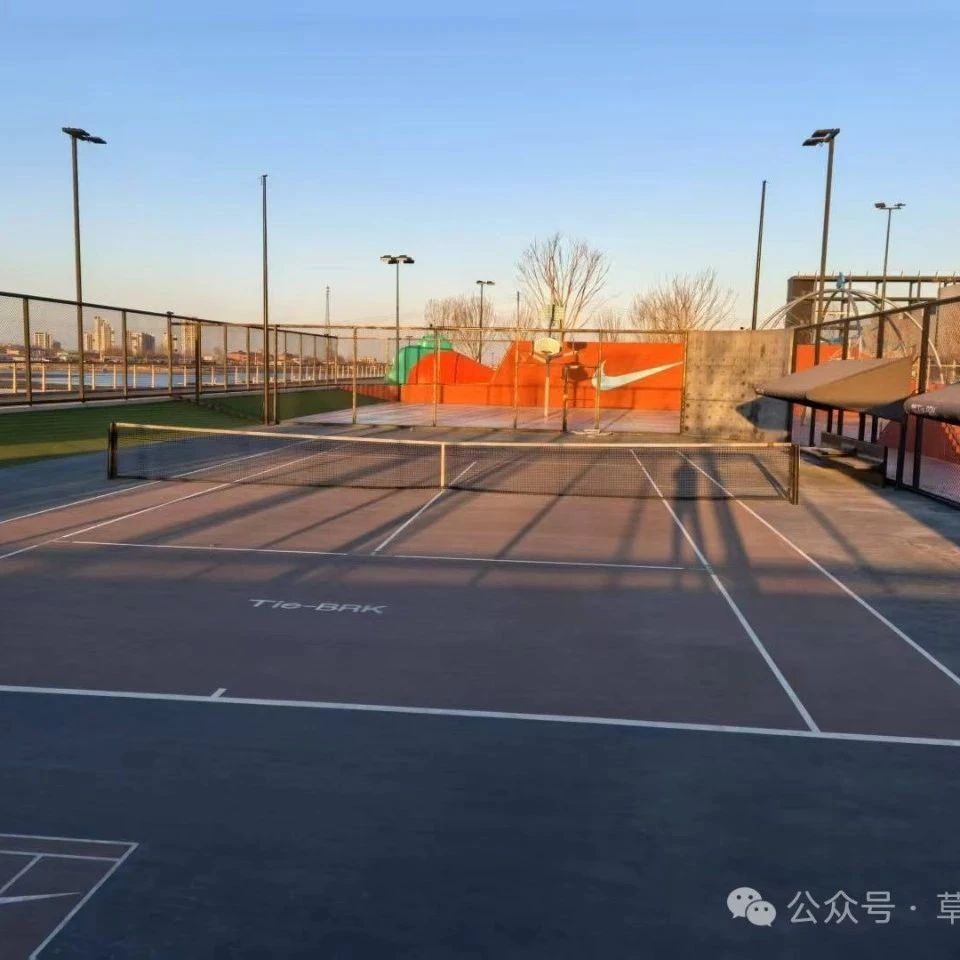
As a "powerfully forceful" serve arcs through the air above the court, the server hasn’t even finished their motion yet—already the receiver has sent the ball swiftly back into the opponent’s half.
The exhilarating "Return Ace!" slipped out at that moment—filled with excitement, we couldn’t help but wonder: how on earth did this guy manage to do it?
Zhuangzi said, "Though myriad changes occur, the essence remains unchanged." Perhaps each skilled receiver has a unique grip and receiving strategy, but their movement patterns share commonalities.
By carefully observing and imitating, we’ve noticed that professional players deliberately straighten their backs and spines when preparing to receive the serve.
Whether they use an Eastern grip or a semi-Western grip, whether they’re two-handed backhands players or one-handed backhands, they undoubtedly keep their backs perfectly straight during the approach step to receive the serve—so much so that their sweat-soaked sportswear clearly outlines the contours of their erector spinae and latissimus dorsi muscles.
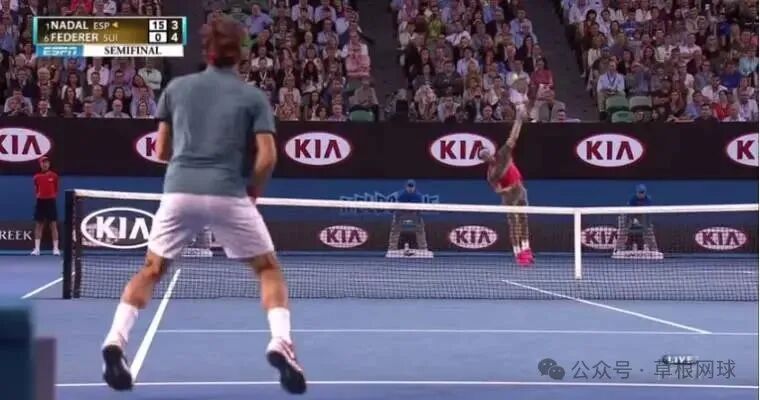
Federer's clearly visible back silhouette during his footwork.
The key secret to hitting a return ace lies in keeping your back properly straight.
It's safe to say that if a player fails to keep their back properly straight during serve reception preparation, further technical improvements will be pointless—after all, maintaining a straight posture is the very first step in mastering the serve-reception technique.
Hitting a beautiful return ace might not be a goal amateur players need to pursue, but the benefits of standing tall go far beyond just returning serves.
This article first clarifies the underlying principles of the upright posture technique, helping readers deepen their understanding and improve their awareness. Next, it outlines methods for assessing the technique and cultivating the right sensation of a straight back—enabling precise evaluation and mindful practice. Finally, it highlights potential risks and pitfalls during training, emphasizing the importance of safe and scientifically sound practice.
01
Key reason
Straightening your back and maintaining an extended thoracic spine are key to achieving a quick rotational movement.
The receiver's ability to hit a Return Ace is the result of using thoracic spine rotation to powerfully return the serve.
What we commonly refer to as the "small lead swing" scientifically translates to "rotating only the thoracic spine."
The human spine can perform extension and flexion movements in the sagittal plane, as well as rotational movements in the horizontal plane.
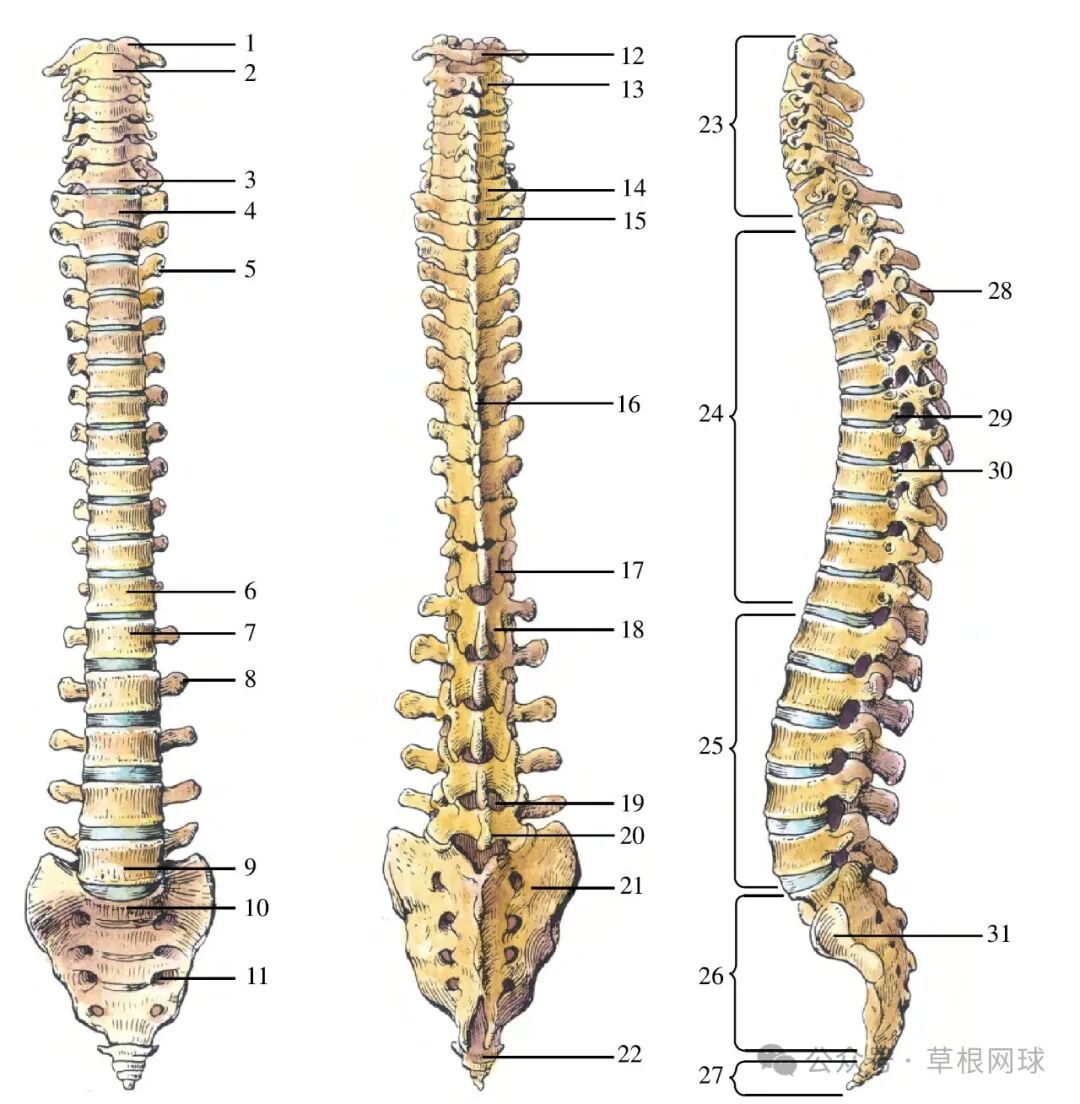
Three views of the human spine (front, back, and side)
Furthermore, depending on the specific location, we can also subdivide the spine from bottom to top into: lumbar vertebrae, thoracic vertebrae, and cervical vertebrae.
These three sections of the spine are characterized by their ability to rotate at increasingly larger angles, from bottom to top.
The lumbar spine can typically rotate about 5–10°.
The thoracic spine can rotate approximately 35–40°.
The cervical spine can typically rotate about 45–50°.
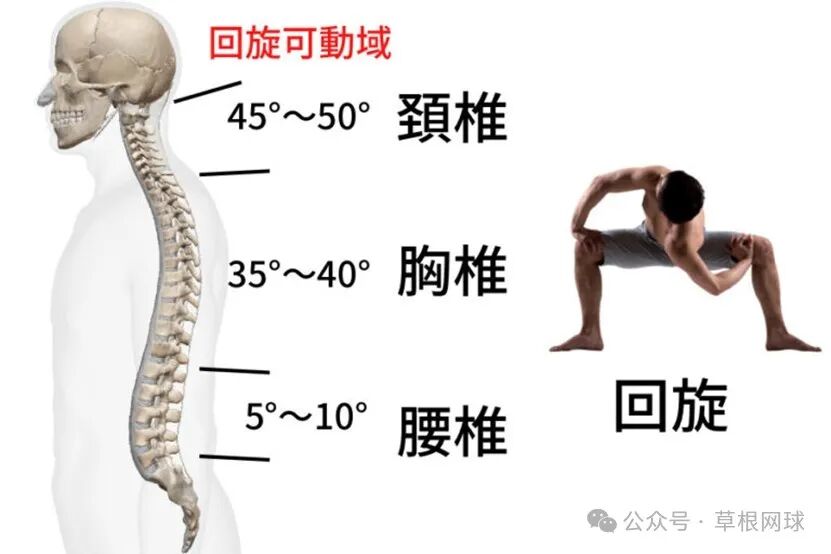
Different parts of the spine have varying angles of rotation.
Due to its structural characteristics, the lumbar spine is well-suited for bearing weight but not for rotation, so we should minimize twisting between the lumbar vertebrae as much as possible.
Meanwhile, the rotation of the cervical spine occurs above the shoulders, and its impact on body rotation during the swing primarily manifests as either premature rotation or excessive over-rotation—topics that this article will not address for now.
So, it's the thoracic spine that plays the central role in rotating throughout the entire motion.
But why is it important to keep your back straight throughout the entire swing? In other words, why must the thoracic spine rotate while remaining in an extended position?
The author believes there are at least three reasons:
1. By maintaining thoracic spine extension, players can achieve the widest possible swing coverage.
2. In the power-generation phase of the swing, maintaining thoracic extension helps activate the posterior core muscles, engaging the back muscles to enhance body stability—this is what ultimately contributes to the overall stability of your swing.
3. When players perform various extreme shots, their movements are often highly exaggerated—but maintaining full spinal extension during these moments can help prevent injuries.
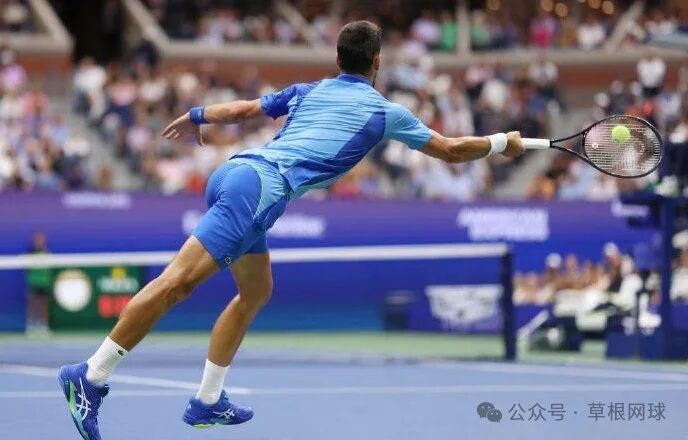
Djokovic maintained thoracic extension even as he dove to make the catch.
02
Technical Evaluation Methods
There are two key evaluation points: first, observing whether the player can keep their back straight; and second, checking if the player can achieve rotation in the thoracic spine.
In the actual teaching process, I rarely rely on vague technical assessments like "rotational movements" or "shoulder rotations" to guide players.
If players rely solely on shoulder rotation to assess their technical movements, they often fall into the trap of "whole-body rotation involving the upper torso—or rotating the entire body around the front foot as the axis."
The aforementioned rotational movement is very slow, resulting in only limited clubhead speed—and it also severely compromises the body's ability to maintain balance.
Correspondingly, I’ll focus on changes in the players’ spinal rotation—since the thoracic spine makes up a relatively larger proportion of the vertebral column and exhibits greater rotational angles, it serves as an excellent indicator for technical assessment.
The key assessment point for thoracic spine rotation is whether the pelvis and shoulders form an angle. If these two areas remain on the same plane throughout the entire swing motion, the player is performing a "holistic" rotation—something that needs to be corrected.
We need to understand that the kinetic chain for every tennis stroke is remarkably long, and thoracic spine rotation serves as the core component of this entire chain.
Even in off-balance situations, professional players can rely on thoracic spine rotation to generate clubhead speed.
Under no circumstances should you lose sight of your focus on and control of thoracic spine rotation while working to refine other technical aspects of a player's game—simply put, "keep your back straight, and rotate your thoracic spine."
03
The most effective training exercises
(This section must be completed under the guidance of a professional fitness coach.)
Certainly, there are many methods for training tennis-specific fitness, but this article aims to use basic fitness techniques to help you quickly experience the sensation of a straight, upright back.
The most effective exercise for straightening your back—squats.
In tennis, the preparatory stance for each shot closely resembles a squat.
During squat training, we need to lift our chest, engage the shoulder blades, and keep our back straight, carefully feeling the contraction in the erector spinae and latissimus dorsi muscles.
Players don’t need to focus on lifting the heaviest possible weight in squats—but once they’ve mastered the squat movement pattern, they should remember that specific back sensation and apply it during their hitting drills.

The player's back posture during the serve reception closely mirrors that of a deep squat.
04
Risks and Hazards
Absolutely do not deliberately tilt your pelvis forward to achieve the effect of stabilizing your lumbar spine. In this scenario, the posterior intervertebral discs in the lower back would experience excessive compression, and even a slight lateral shift could lead to injury.
If players feel they can’t stabilize their lumbar spine without consciously tucking their pelvis during practice, immediately stop hitting drills!
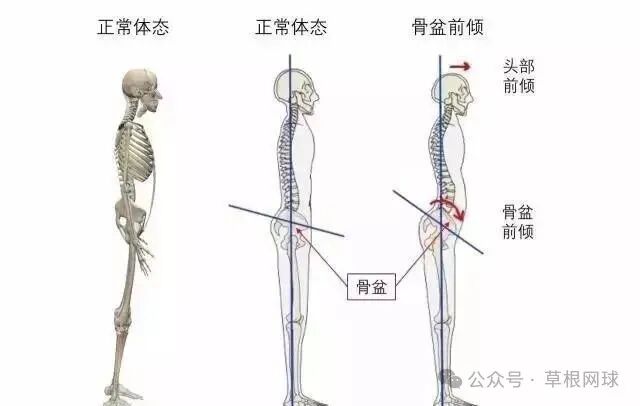
Anterior pelvic tilt or anterior pelvic translation can pathologically lead to restricted lumbar spine mobility.
The cause of this situation may be a lack of core muscle strength among players, so they should incorporate some exercises aimed at strengthening their abdominal and lower-back muscles.
A more serious cause is pelvic misalignment, resulting in anterior tilt or anterior translation, which requires postural correction.
The author suggests first assessing whether you have the ability to properly engage your core and stabilize your lumbar spine, then practicing the fundamental squat movement with light weights to get a feel for maintaining a straight back. Finally, gradually incorporate hitting drills—this approach offers a relatively safe and straightforward path forward.


